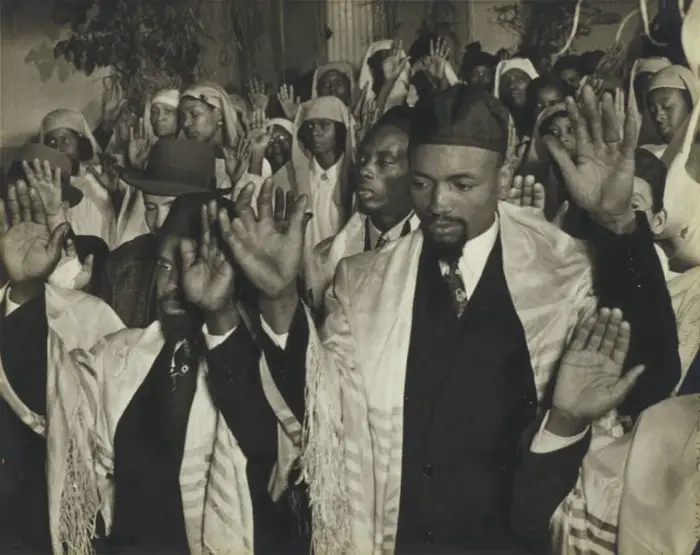 inorities are so fragile due to their small cultures that can be easily forgotten and lost in time. Although a person can define himself or herself as part of many cultures, there are subgroups of cultures that are very specific, such as the Jewish community from Ethiopia. Their lives, as well as culture, would have been lost if United Nations would have not intervened to help.
inorities are so fragile due to their small cultures that can be easily forgotten and lost in time. Although a person can define himself or herself as part of many cultures, there are subgroups of cultures that are very specific, such as the Jewish community from Ethiopia. Their lives, as well as culture, would have been lost if United Nations would have not intervened to help.
The process of evacuating the Jews from Ethiopia and bringing them to Israel reached its peak in Operation Solomon on May 24, 1991. In 35 hours, over 14,000 people were extracted, setting the record for the most numerous flights with a commercial aircraft in history. Not only that but also the fact that so many people have been saved with the help of the United Nations.
Beta Israel, which translates to the House of Israel, is a population that was said to be descended from Menelik First, the son of Queen Sheba and King Solomon, who built the first temple in Jerusalem. This population is also considered to be one of the twelve tribes of Israel. The most likely hypothesis is that they have mutual roots with the Agua population, which was geographically located on the Ethiopian plateau and was gradually converted to Judaism, beginning before the birth of Christ. Throughout history, this population had been persecuted by settlers and Christian neighbors.
In the 1970s, much of the Falasha or Beta Israel population took refuge in the territory of the Sudanese Muslim state as a result of civil wars in Ethiopia. They were trapped in Sudanese refugee camps, given that they could not return to the war zone of Ethiopia and could not advance further from Sudan, they had to settle in Sudanese refugee camps, funded by the United Nations. Thus, the Falasha population had been subjected to abuse and in some cases to massacres both by the Sudanese government within the camps and because of civil conflicts in the area of Ethiopia. In any case, the cultural and religious peculiarity that differentiates it from the other tribes had been invoked as a reason for discrimination and repudiation.
The Mossad agents
In 1978, a letter describing the situation of the Jews in Ethiopia and the possibility of a modern exodus arriving in Israel prompted the Israeli leadership to take an interest in this issue. Since Sudan was a member country of the Arab League, an enemy of the state of Israel, the method of diplomatic negotiations could not take place. Therefore, it was decided to form a secret team of Mossad agents in order to gradually extract the Falasha population from the camps in Sudan.
The plan was to reopen an old hotel complex with access to the sea and use it as a screen action to mask the evacuation operations of Ethiopian Jews at sea. Rescue missions worked until 1980 when the Sudanese authorities noted that several thousand Falashi were missing from the refugee camps. As a result, the borders were closed and monitored more closely, and the pressure was put on Ethiopian Jews to uncover the Mossad plot.

In order to reopen borders to the Falashians fleeing Ethiopia, the state of Israel called on the help of a British businessman who bought cotton from Sudan for his factories. Using his contacts, he managed to ease the situation and reopen borders to Ethiopian refugees in 1984, while also linking an Israel-Sudan negotiation route that would not have caught the attention of other Sudan partner states in the Arab League.
Operation Moses
In the context of the creation of the Israel-Sudan secret channel and the increasing number of Ethiopian refugees settling in the overcrowded camps in Sudan and the growing hunger among the refugee community, Moses began the operation. This, unlike the missions from 1978–1980, aimed at direct evacuation through aircraft, which either landed in the desert or at the airport in the capital Khartoum and were intended for Europe so as not to raise suspicion of Arab states.

The international public opinion found out about these actions in 1985, Sudan permanently closed its borders to the waves of refugees coming from Ethiopia. Thus, the state of Israel had focused on captive Falashians in Ethiopia marked by civil war, trying to reach a compromise with Mengistu dictator Haile Mariam.
An ally of the Soviet Union during the Cold War, Colonel Mengistu refused to negotiate with the United States and its allies until 1991. The dismantling of the Soviet Union meant for the Dictator Mengistu the loss of the source of weapons and aiding him in the civil war against the rebels. Thus, since 1991, Mengistu had been trying to establish diplomatic relations with the United States of America by granting Israel the chance to evacuate the Beta Israel population.
Finally, the negotiations on the evacuation were reduced to money, the Ethiopian Jews became hostages. The final amount was $ 35 million, but it was never paid. But in the context of the rebels gaining ground, Mengistu and part of his government fled, leaving the country’s institutional leadership in disarray, which meant that the evacuation had to take place as quickly as possible. Specifically, by the time the rebels had conquered the capital Addis Ababa and gained control of the airport, essential for the mass evacuation planned by Israel.
Through the intervention of the National Security Council, the Ethiopian rebels have agreed to postpone the occupation of the capital by 48 hours.
Operation Solomon

On May 24, 1991, Solomon’s operation began and lasted 34 hours. The Ethiopian authorities have repeatedly threatened to stop the operation on the grounds that the payment of $ 35 million was not made, which is also made difficult by the flight of the Ethiopian Minister of Finance, the only one who knew the account where the payment was to be processed. Israeli officials were forced to improvise and bribe public officials and bus drivers to keep the operation going. 35 military and commercial aircraft, most without seats, flew continuously, without one stop, managing to extract more than 14,000 Jews, almost all of Beta Israel’s population remaining in Ethiopia.
Also in this operation, a world record was set for the largest number of passengers on a commercial plane, 1088 respectively with a Boeing 747. The number also includes two children born during the flight. Those efforts are what saved this precious community.
Avid Writer with invaluable knowledge of Humanity!
Upcoming historian with over 30 million views online.
“You make your own life.”





